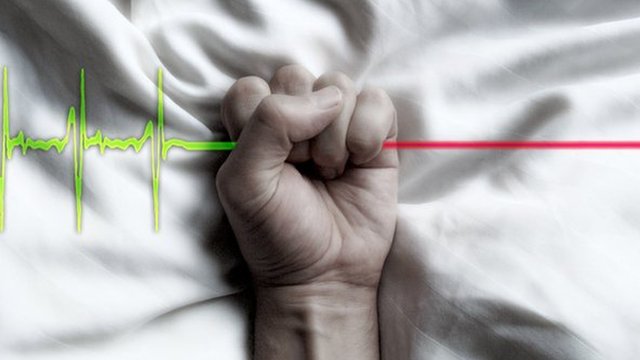Blog Post
When dying with dignity becomes killing with impunity
The formula has repeated itself time and time again over the last several decades: The apologists for abortion, assisted suicide and euthanasia proclaim some new right to kill or be killed, pro-lifers point out the consequences of downgrading human life and the inevitable spread of the Culture of Death, and the apologists scoff and accuse pro-lifers of being hysterical. Indeed, on the “Dying with Dignity” website, those apologists claim explicitly that “emotional reasoning is one of the greatest obstacles that advocates for the right to die with dignity confront.” I heard one such exit strategist on the CBC several weeks ago, proclaiming that we should “look to other countries” such as the Netherlands and Belgium, which apparently prove false all pro-life concern surrounding the idea of killing people.
Well, let’s take a look at the fresh corpses that euthanasia and its practitioners have laid on our collective doorsteps of late.
The Daily Mail reported on October 7 that a Dutch woman had been killed by medics by lethal injection because she feared she could not cope with becoming blind. One of the health specialists analyzing her case insisted that it was exceptional because, “She was, for example, obsessed by cleanliness and could not stand being unable to see spots on her clothes.”
Earlier this month, news outlets around the world reported on a case of a 44-year-old Belgian woman named Nancy Verhelst, who opted to die by euthanasia after her sex-change operation turned her, in her words, “into a monster.” After-the-fact details revealed that Nancy had been cruelly rejected by her mother, who had no desire for a girl. Very few commentators speculated on whether or not counselling and psychological help may have been a more compassionate option than killing.
In December 2012, 45-year-old Belgian twins were killed by lethal injection at Brussels University Hospital after discovering that they would go blind. While neither of them were in pain or terminally ill, they decided that not being able to visually see each other again would be unbearable, said farewell to their parents and brother, and as the attending doctor said, “At the last there was a little wave of their hands and then they were gone.”
In February, a Belgian woman known as “Ann G.” suffering from anorexia nervosa was killed by her psychiatrist. This was after her previous psychiatrist had admitted openly to sexually abusing her—this poor woman had publicly expressed anger that he had not been appropriately punished before opting for death.
In January, Dr. Charles Bentz of Oregon revealed that in spite of his opposition, one of his patients suffering from depression requested that another doctor assist him in killing himself. According to Bentz: “I was very concerned about my patient’s mental state, and told her [the other doctor] that addressing his underlying issues would be better than simply giving him a lethal prescription. Unfortunately, my concerns were ignored, and two weeks later my depressed patient was dead from an overdose prescribed by this doctor.”
The State of Oregon has come close to the edge of the slope already—a recent HBO documentary entitled How to Die in Oregon revealed that one man was told by his insurance company that his cancer diagnosis was too grim to warrant chemotherapy treatments, but that instead they would cover “end of life treatment.” When he went public, the Oregon Health Board reversed its decision. Too soon, perhaps.
And the rates of euthanasia keep on climbing—in the Netherlands they have reached a record high, climbing by thirteen percent in 2012. Euthanasia now accounts for one in 30 deaths in Holland, with almost one in seven of those deaths now being at the hands of his or her doctor. These statistics, The Daily Mail notes, “did not take account of deaths by terminal sedation, by which patients are deliberately sedated before they are dehydrated and starved to death, an act often referred to as ‘euthanasia by omission.’” Belgium has seen a 25 percent increase in euthanasia deaths, which now account for two percent of all deaths in Belgium.
The debate on euthanasia and assisted suicide is heating up here in Canada as well. And once again, those who claim to be courageously battling for the “right” to “die with dignity” are accusing pro-lifers of using emotional arguments and slippery slope hysteria—all the while, I might add, using extremely rare and emotional cases to invoke public sympathy. Look to places where euthanasia is already reasonably and safely practiced, they urge us. And so we have—doctors are killing the blind, the depressed, and anyone else that feels that they are no longer valuable and that life is no longer worth living.
And worse–in the Netherlands, the 2002 Groningen Protocol allows doctors to murder disabled infants, as long as they follow “approved guidelines.” This week, news out of Belgium reveals that lawmakers are now planning to vote on how to extend euthanasia practices to children and dementia sufferers. Don’t worry, though—children will have to have the consent of their parents before having themselves killed. Can you think of any way that could go wrong?
The sheer ludicrousness of this situation should be apparent to everyone. Apologists for the Culture of Death are willing to accept any amount of “collateral damage” in order to attain the absolute power they seek—the power to kill and be killed. There is a human right to life, but there is no human “right to die.” There never has been. Inalienable rights cannot be surrendered. In the face of suffering, it is our duty to alleviate that suffering, not eliminate the sufferer. Our society should be in the business of killing problems, not people. Because in the face of pain, the humane response is kindness, compassion, and self-sacrifice, not the Grim Reaper sporting a “Death with Dignity” button.








